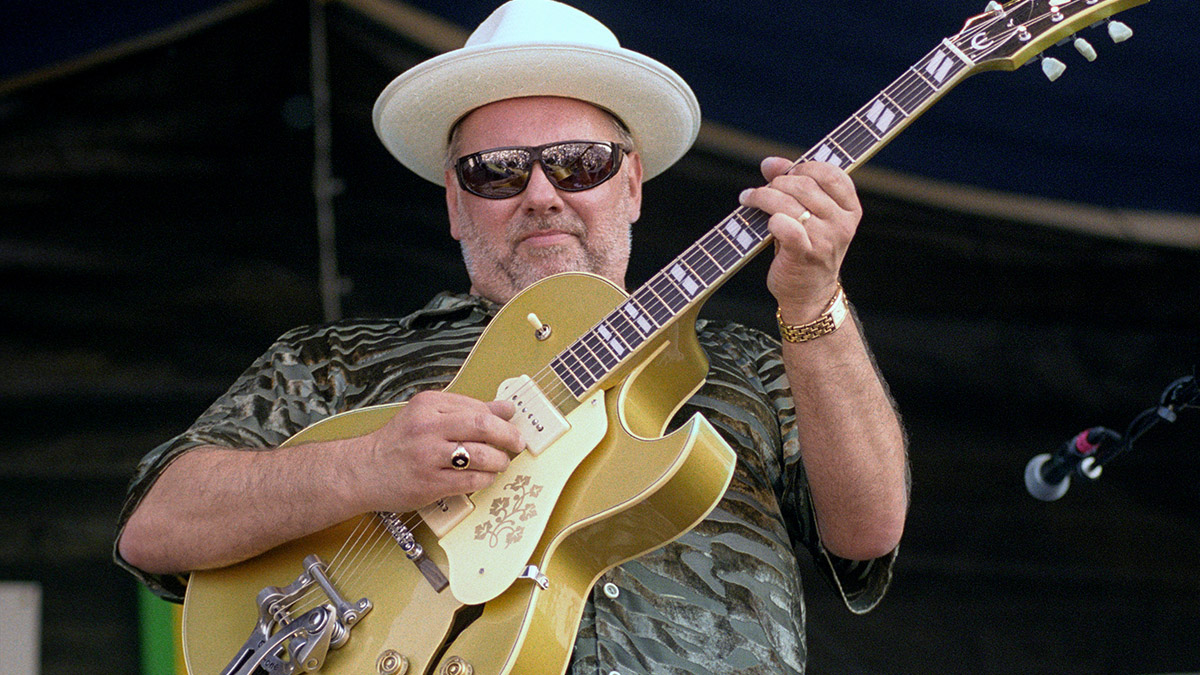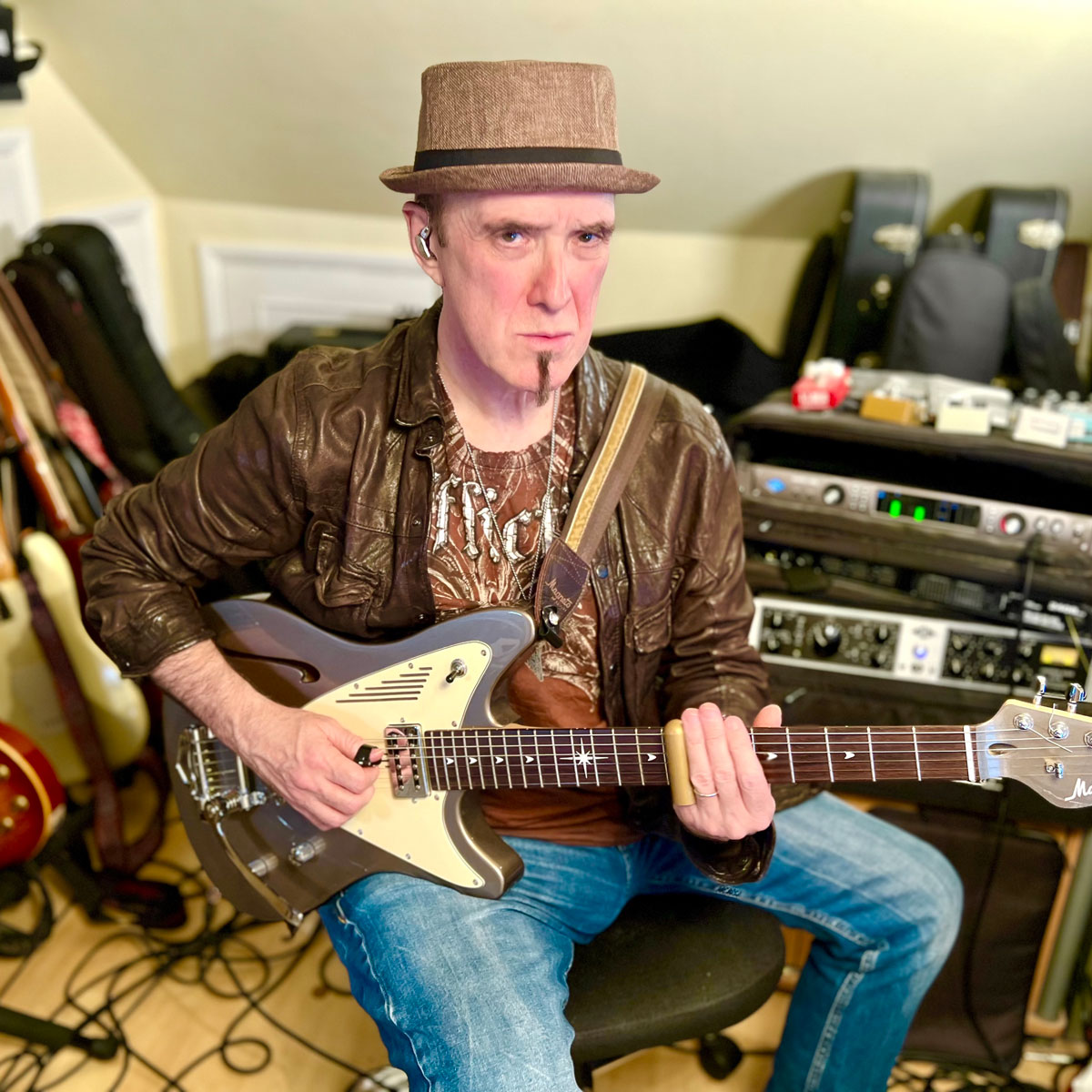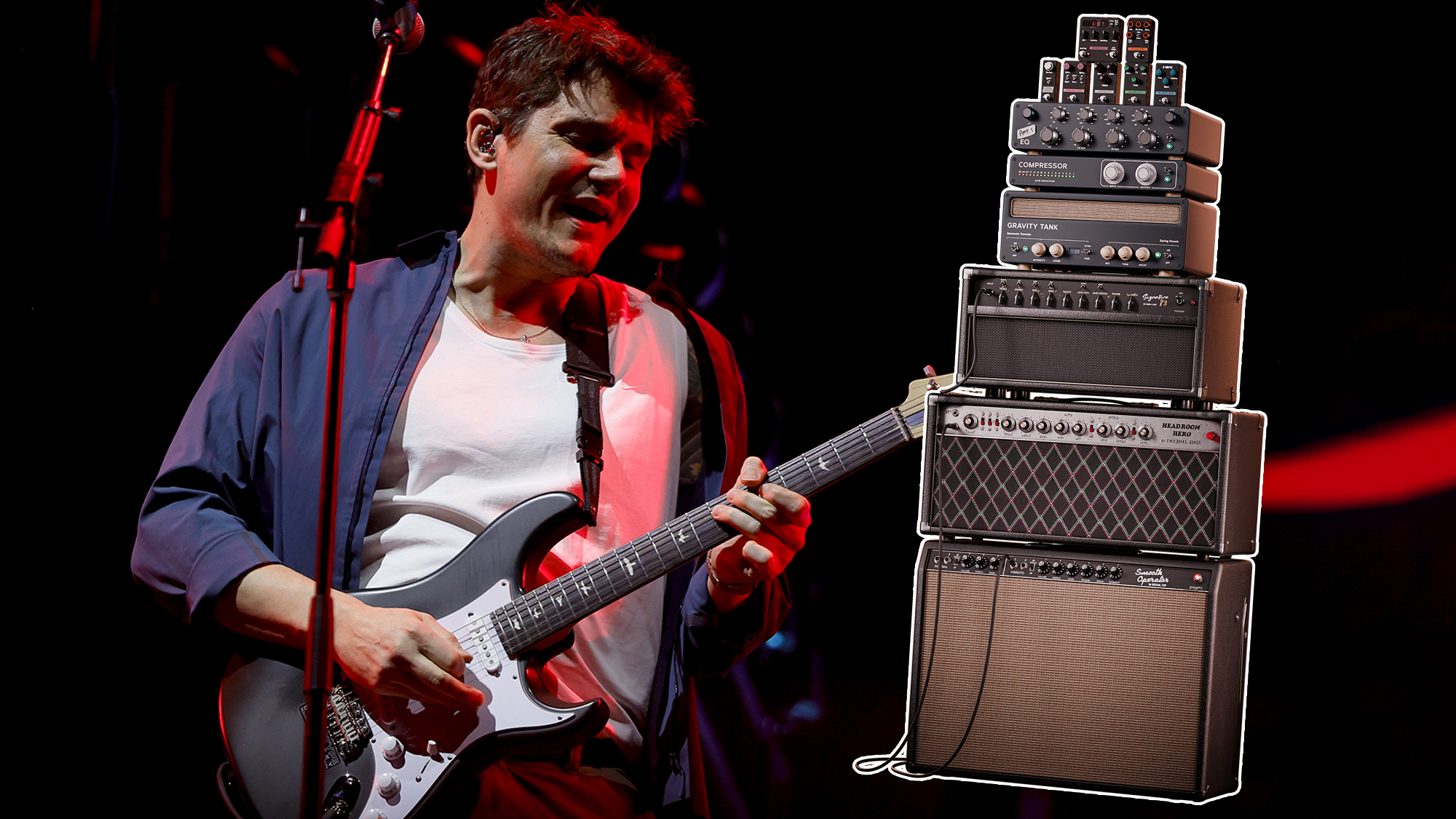He recorded with Bob Dylan, toured with Tom Waits and replaced Jimmie Vaughan: Duke Robillard is American blues guitar royalty
This lesson in Robillard's improvisational lead guitar style showcases his ability to incorporate melody in solos, and blend blues with jazz

Born in Rhode Island, Duke Robillard is widely regarded as American blues guitar royalty. Duke was a founder of the band Roomful of Blues which remains a mainstay of the roots scene in the US.
Duke is an encyclopaedia of guitar styles, from his grasp of T-Bone Walker’s approach to his command of swinging blues and even to straight-ahead jazz, having recorded with the great Scott Hamilton. His command of blues language is exemplary and you’ll learn a lot from studying his style.
It’s notable that Duke also replaced the great Jimmie Vaughan in The Fabulous Thunderbirds. His integration of the language of the Texas blues style is worth extended listening. Duke has also toured with Tom Waits and recorded and toured with folk-rock legend Bob Dylan.
In my research for this article, I transcribed several solos and they were all full of killer licks. There were many stand-out ideas which I’ve used here. Among these are double-stops, swinging rhythms that go a little deeper than most into the triplet subdivision of the beat (example 3), plus chromatic ideas and jazz-influenced lines.
Our examples are all written to work over a shuffle feel. Where you see straight eighth notes (quavers) written, they are to be played swung. So the subdivision of the beat is into three equal parts, with the first of the two eighths held for the first two of the underlying subdivisions, the second eighth lasting just for a third of the beat.
In the first example, you’ll see a jazz-tinged line that uses chromatic approaches to chord tones. Duke’s playing is peppered with these kinds of sophisticated twists and turns. He has obviously done his homework when it comes to navigating the changes. He often uses the 6th degree for tension and this is often seen by blues players as a jazz-derived approach.
His finesse in making the changes and his deep sense of musical style are seen in the way he uses the major and minor 3rds over dominant 7th chords. He has an extremely fine sense of the harmony – you could probably hear the changes without any accompaniment, as he spells out the harmony so artfully. His depth of invention and forward momentum as he develops a solo are really inspiring.
All the latest guitar news, interviews, lessons, reviews, deals and more, direct to your inbox!
While he has a slightly different vibe depending on whether he is using a solidbody guitar with single-coil pickups or a big jazz box, the core swinging blues vibe is always there and he often swaps between different types of guitar on a gig when he wants to establish different feels.
While the sample solo is chock full of licks (I wanted to get maximum Duke-ness into it!), in his recordings and live performances, the phrasing is always a masterclass. Some of the ideas here are a little bit more tricky than they might seem at first. But stick with it, I think you’ll enjoy the ride!
Get the tone
Duke uses various types of guitars, depending on the genre in which he is operating. For the Texas and Chicago blues styles, go for a stinging single-coil tone. On the jazz stuff, a thicker tone will be more appropriate – the neck pickup is your friend here.
Duke doesn’t rely on pedals, so a warm but clear guitar amp is the best starting point, then simply add reverb. You’ll probably be able to use all of his ideas with a more drive sound if that’s your preference - the phrasing and the detail of the lines is more important.
Example 1. D7-G7 phrase
Our first example is a jazzy idea that weaves a pattern by targeting chord tones chromatically. The two bars of D7 then set up a resolution to the 5th degree of G7 - the note D.
Example 2. Bluesy double-stops
This one’s a classic Duke move using double-stops. Note the slur into the major 3rd of D7, running up an arpeggio to the #9 - E# (or F).
Example 3. Chordal lead playing
We start here by working the triplet subdivision of the beat. Hitting the first two notes of the triplet like this, shows command of the shuffle groove.
Example 4. Jazzy-blues line
Here we approach the b7 of G7 from the 6th (E-F). This lends a jazzy feel and outlines the harmony in a deliberate manner typical of Robillard.
Example 5. Using chromaticism
In bar 2 of this example we use chromatic movement to spice the line up. The jazzy double-stops sound not unlike like George Benson.
Solo
Our solo develops the example lines and uses many of Duke’s approaches to improvisation. He would rarely pour in as many signature ideas as this in one of his solos, as he’s usually more measured, but we’ve done it this way to show the many different facets to his playing.
A professional guitarist for many years, Andy G Jones has played with Van Morrison, James Ingram, Lamont Dozier, Queen (Brian May and Roger Taylor), Robben Ford, Billy Cobham, John Illsley (Dire Straits), KT Tunstall, Albert Lee (featured on Andy's upcoming CD), Mike Finnigan, Dave Landreth and Ryan Voth from The Bros. Landreth, Malford Milligan, The BBC Radio Big Band, Patti Austin, Hamish Stuart (Average White Band), Lalo Schifrin (Hollywood film composer Bullitt, Mission Impossible), Hank Marvin, James Dean Bradfield (the Manic Street Preachers), Grady Tate, Agnetha from ABBA, Cliff Richard, Dudley Moore, Nathan James (Inglorious), Joey Tempest (Europe) and Kelsey Grammar.


